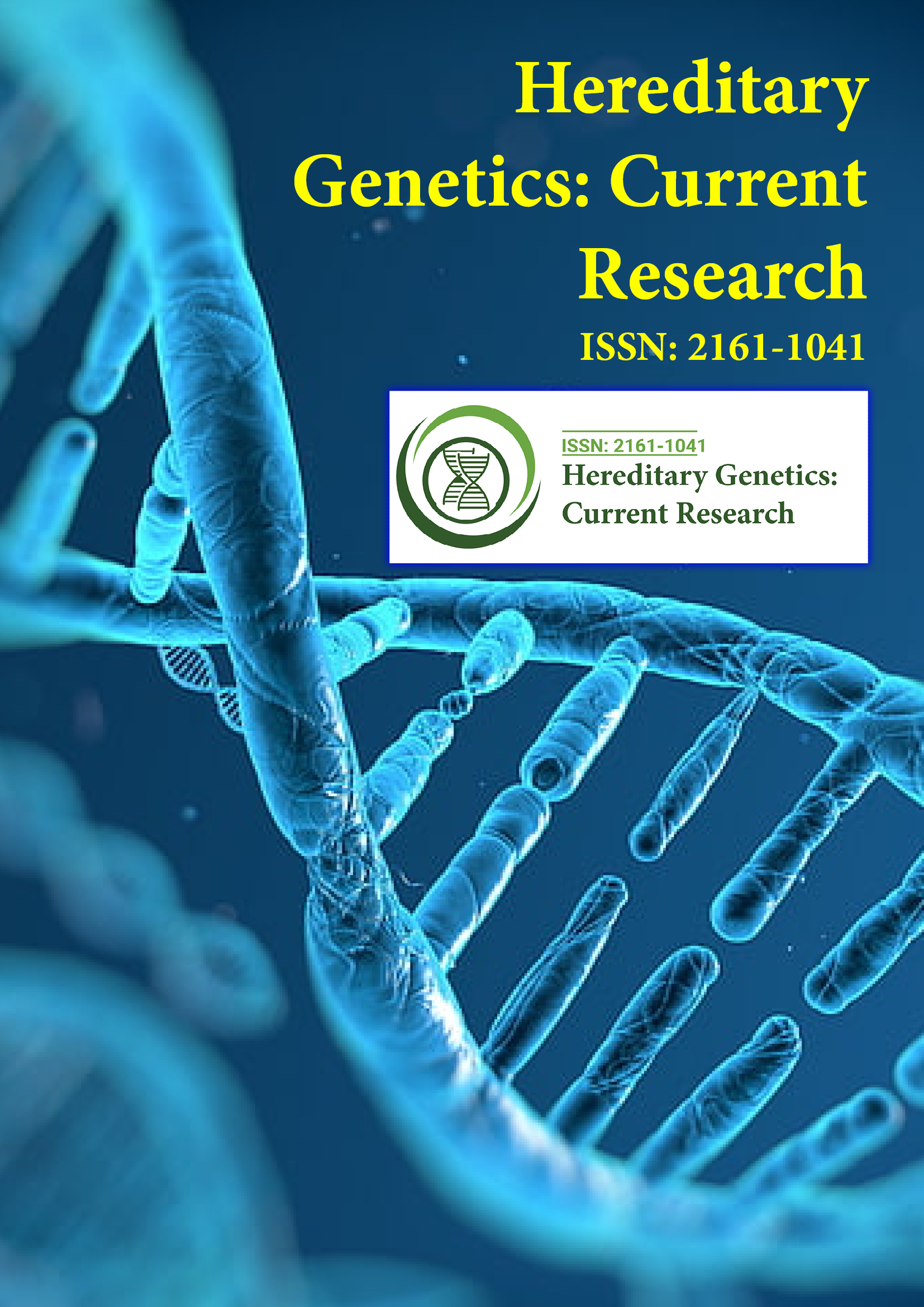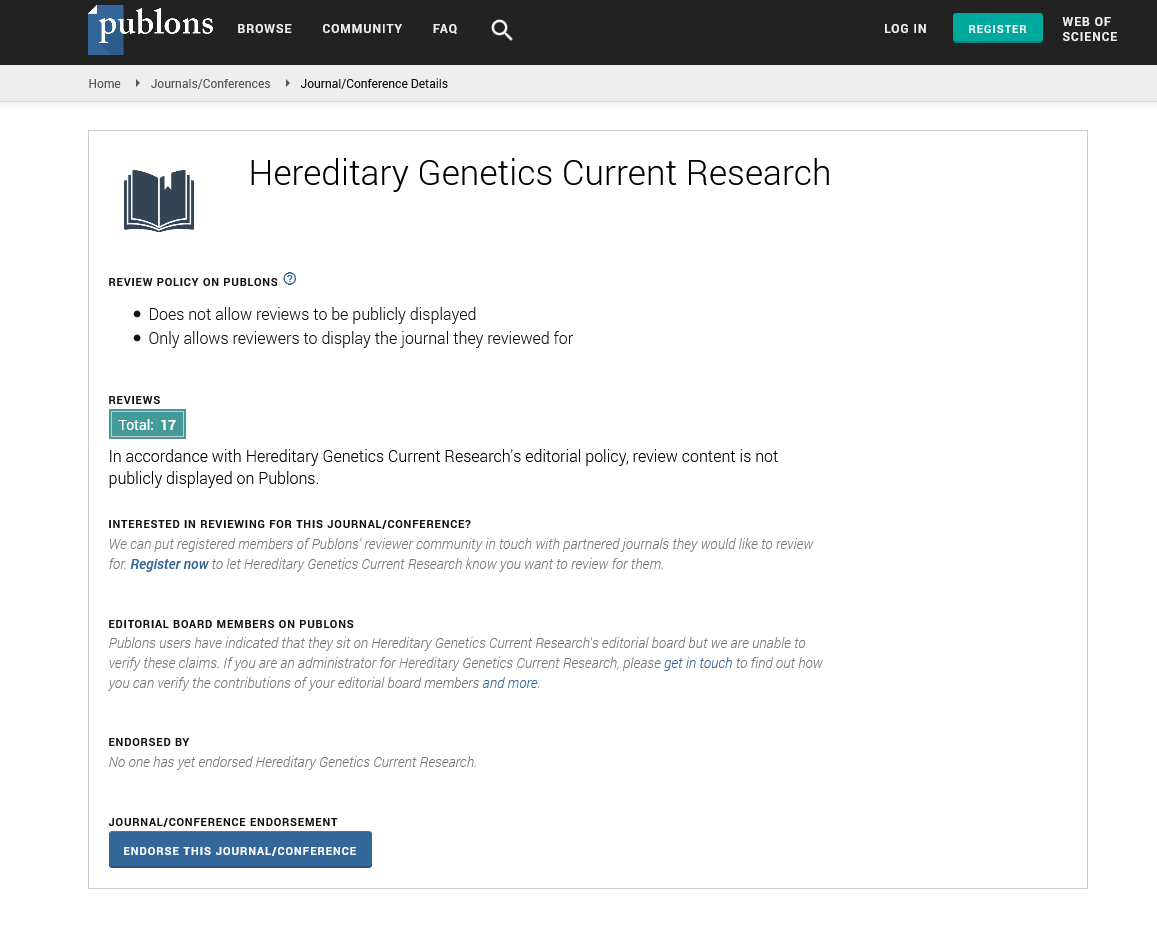Indexed In
- Open J Gate
- Genamics JournalSeek
- CiteFactor
- RefSeek
- Hamdard University
- EBSCO A-Z
- NSD - Norwegian Centre for Research Data
- OCLC- WorldCat
- Publons
- Geneva Foundation for Medical Education and Research
- Euro Pub
- Google Scholar
Useful Links
Share This Page
Journal Flyer

Open Access Journals
- Agri and Aquaculture
- Biochemistry
- Bioinformatics & Systems Biology
- Business & Management
- Chemistry
- Clinical Sciences
- Engineering
- Food & Nutrition
- General Science
- Genetics & Molecular Biology
- Immunology & Microbiology
- Medical Sciences
- Neuroscience & Psychology
- Nursing & Health Care
- Pharmaceutical Sciences
Opinion Article - (2024) Volume 13, Issue 3
The Role of Genetics in Paraganglioma and Pheochromocytoma
Alice Roberts*Received: 30-Aug-2024, Manuscript No. HGCR-24-28213; Editor assigned: 02-Sep-2024, Pre QC No. HGCR-24-28213 (PQ); Reviewed: 16-Sep-2024, QC No. QC HGCR-24-28213 ; Revised: 23-Sep-2024, Manuscript No. HGCR-24-28213 (R); Published: 30-Sep-2024, DOI: 10.35248/2161-1041.24.13.289
Description
Pheochromocytoma is a rare, typically noncancerous tumor that develops in the adrenal glands, which are located on top of the kidneys. These tumors arise from the chromaffin cells of the adrenal medulla, responsible for producing hormones like adrenaline (epinephrine) and norepinephrine. When affected, the tumor often causes an overproduction of these hormones, leading to a range of symptoms, including high blood pressure (hypertension), rapid heart rate, sweating, headache, tremors and anxiety. These symptoms can be episodic and may worsen during physical exertion, stress, or certain medications.
The exact cause of pheochromocytoma is unknown, but it can sometimes be associated with genetic conditions, such as Multiple Endocrine Neoplasia type 2 (MEN2), von Hippel- Lindau disease, or Neurofibromatosis Type 1 (NF1).
Diagnosis typically involves blood and urine tests to measure hormone levels, along with imaging studies like CT scans or MRIs to identify the tumor. Treatment usually involves surgical removal of the tumor, which is often curative. However, if left untreated, pheochromocytomas can lead to severe complications, including heart problems, stroke and organ damage due to prolonged hypertension.
Management may also include medications to control blood pressure and manage symptoms if surgery is not immediately possible. Regular follow-up is essential to monitor for tumor recurrence.
The neurophysiology of hereditary canine SMA revolves around the dysfunction of motor neurons, which are responsible for transmitting electrical impulses to the muscles. These impulses are essential for muscle contraction and voluntary movement. In dogs with SMA, the motor neurons gradually lose their ability to transmit signals, leading to muscle weakness and atrophy. The degeneration of motor neurons typically begins in the lower spinal cord and progresses upwards. This pattern of neurodegeneration results in weakness in the limbs, particularly in the hind limbs, which is a hallmark of SMA.
One of the most significant neurophysiological changes in SMA is the loss of both large and small motor neurons, which are responsible for both voluntary movements and maintaining muscle tone. These motor neurons are essential for initiating and controlling muscle movements and their degeneration leads to progressive weakness and paralysis. A characteristic feature of hereditary SMA is the absence of the reflexes in the affected limbs, a result of the breakdown of motor neuron pathways. Electromyography (EMG) and nerve conduction studies are often used in veterinary diagnostics to evaluate the extent of motor neuron dysfunction and muscle atrophy.
Conclusion
Management of hereditary canine SMA is primarily supportive, as no cure currently exists for the condition. Physiotherapy, including strength-building exercises and mobility aids, can help manage the symptoms and improve the quality of life for affected dogs. Nutritional support and weight management are also important in slowing the progression of the disease, as muscle wasting can exacerbate weakness. Researchers are describing potential therapeutic options, including gene therapy and stem cell treatments, to restore motor neuron function and slow the disease’s progression. Recent advancements in gene editing technologies, such as CRISPR-Cas9, may hold promise for future treatments of hereditary SMA, both in dogs and humans.
Citation: Roberts A (2024). The Role of Genetics in Paraganglioma and Pheochromocytoma. Hereditary Genet. 13:289.
Copyright: © 2024 Roberts A. This is an open access article distributed under the terms of the Creative Commons Attribution License, which permits unrestricted use, distribution, and reproduction in any medium, provided the original author and source are credited.

